Quick Wins
- Use open-pollinated/heirloom tomatoes if you want seeds that grow true; hybrids can produce unpredictable offspring.
- Pick fully ripe fruit (deep color, slightly soft) from healthy plants—never save seeds from diseased tomatoes.
- Fastest method: quick-rinse and sow right away; highest success: short fermentation to remove the gel that inhibits germination.
- Target germination temps: 21–27°C for 5–10 days to sprout.
- Aim for slightly acidic media: pH 6.2–6.8.
Seed Extraction
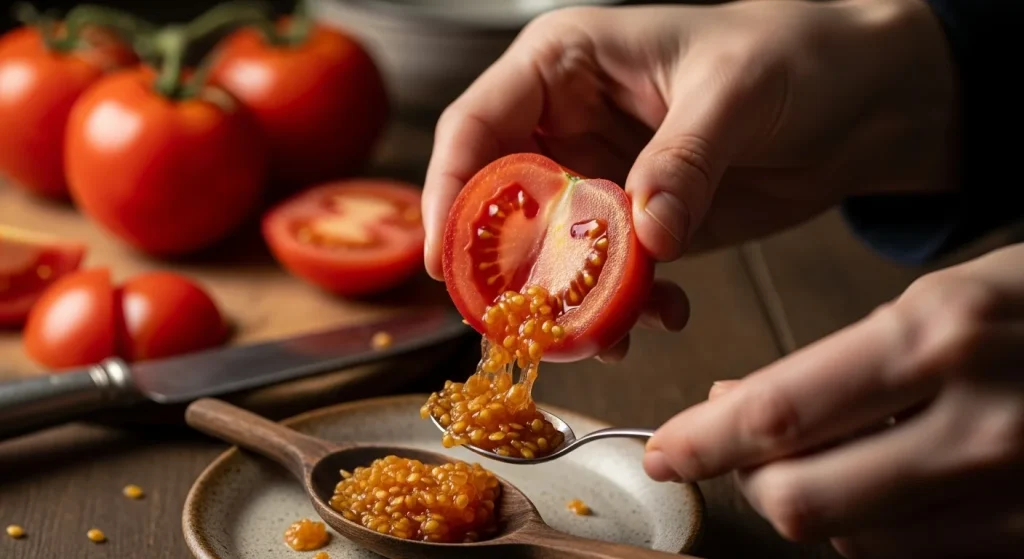
Choose a blemish-free, fully ripe tomato from a vigorous, disease-free plant to maximize viable, healthy seed. Slice across the equator, scoop the seed gel into a clean cup or jar, and reserve the remaining flesh for eating or compost.
Also Read : Tomato Container Watering: Avoid Overwatering
Cleaning Methods (pick one)
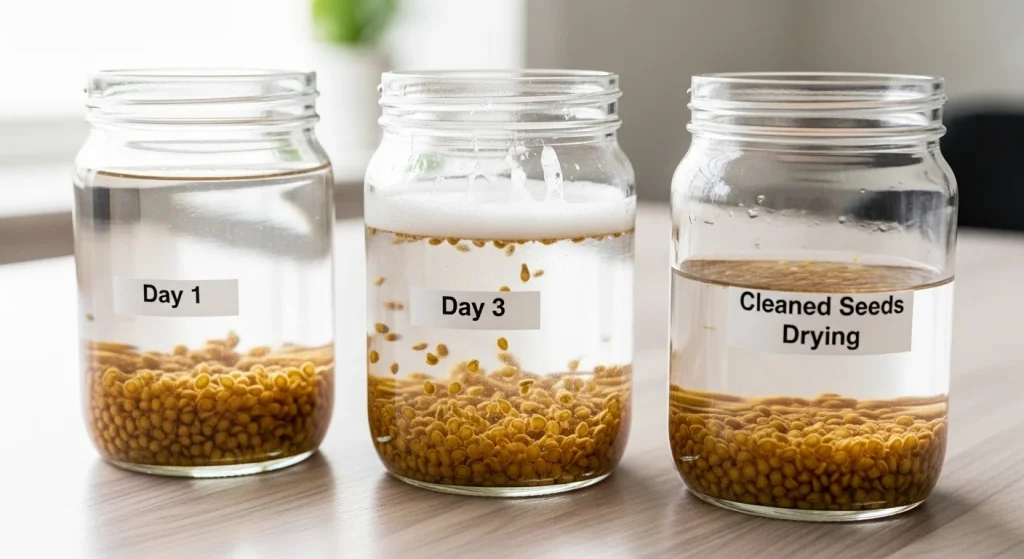
- Fermentation (highest success in many climates): Add a splash of water to the seed gel, cover loosely, and keep at room temperature for 48–72 hours until a thin mold forms; swirl daily and stop when most seeds sink—this dissolves the germination-inhibiting gel and can reduce some seed-borne pathogens. Do not extend beyond ~4 days; over-fermentation can injure seeds.
- Quick-rinse (fastest): Rinse seeds vigorously in a fine sieve to remove as much gel as possible, then sow immediately; trade-off is slightly higher risk of damping-off or variability if gel remains.
Tip: Sinking seeds are generally viable; floating debris and poor seeds can be discarded during the final rinse.
Drying and Storage (if not sowing immediately)
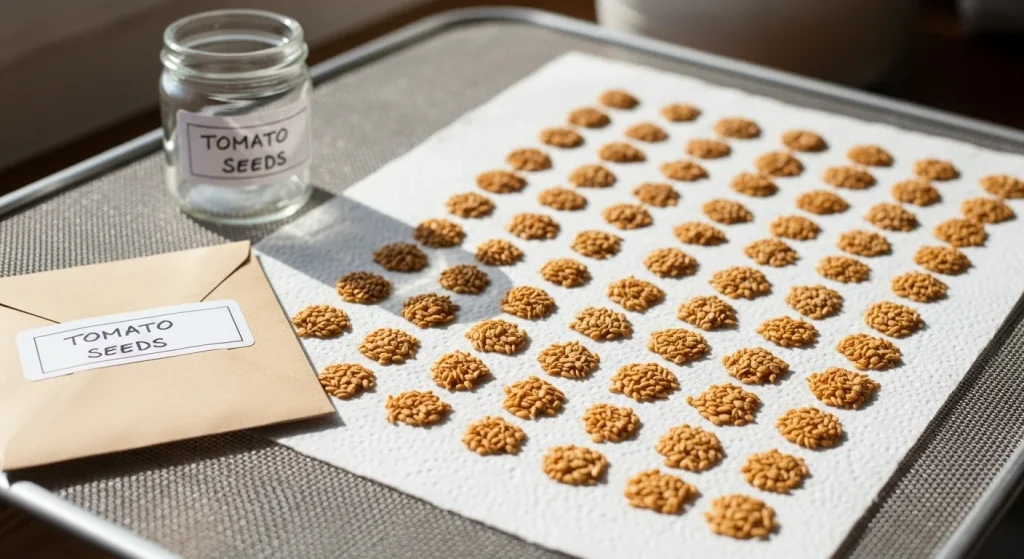
Spread clean seeds in a thin, labeled layer on a non-stick surface (ceramic plate, coffee filter) in shade with moving air for 2–3 days—no direct sun or heat.
Test dryness by rubbing: fully dry, seeds feel hard and no longer clump. Store in a paper envelope in a cool, dry spot.
Sowing and Medium
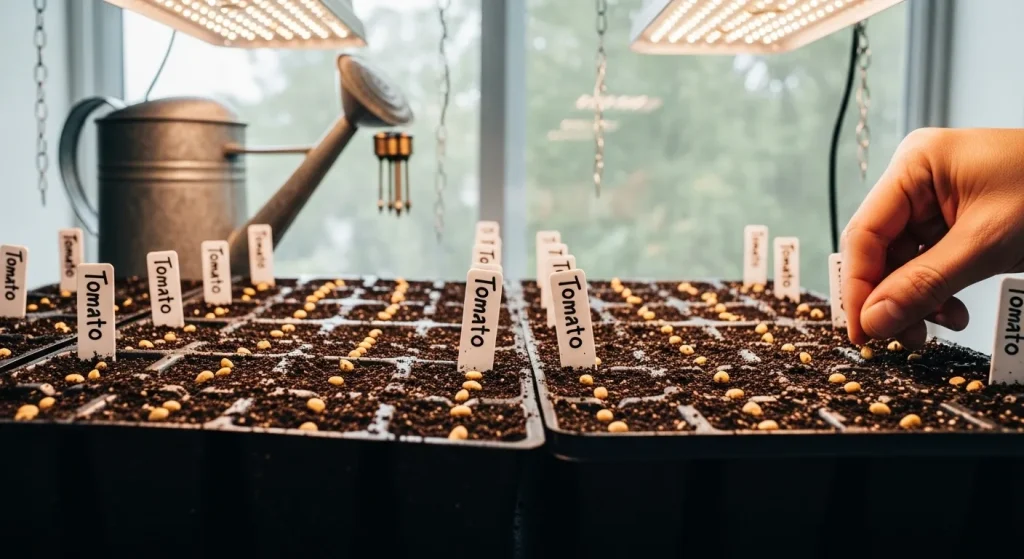
Use a drainage-first seed-starting mix; avoid heavy garden soil. Aim for slightly acidic conditions with pH 6.2–6.8 for nutrient availability and root health.
Sow seeds 0.5cm deep, spaced, so seedlings don’t crowd; gently firm the surface for good seed-to-soil contact.
Simple mix idea: fine-textured, sterile seed-starting blend that drains well; pre-moisten before sowing so it feels like a wrung-out sponge.
Watering and Environment
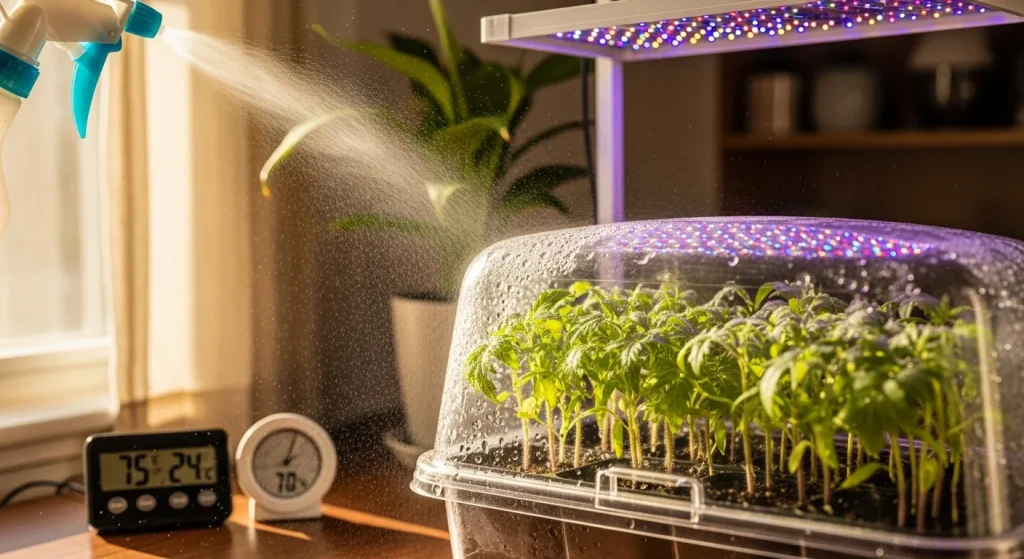
Bottom-water or mist gently after sowing to avoid dislodging seed; keep media consistently moist, never waterlogged—think “wrung-out sponge.” Maintain 21–27°C for germination; warmer within this range speeds sprouting, cooler slows it.
As soon as seedlings emerge, give strong light to prevent legginess (bright window, grow lights 5–10cm above tops).
Timeline and Checkpoints
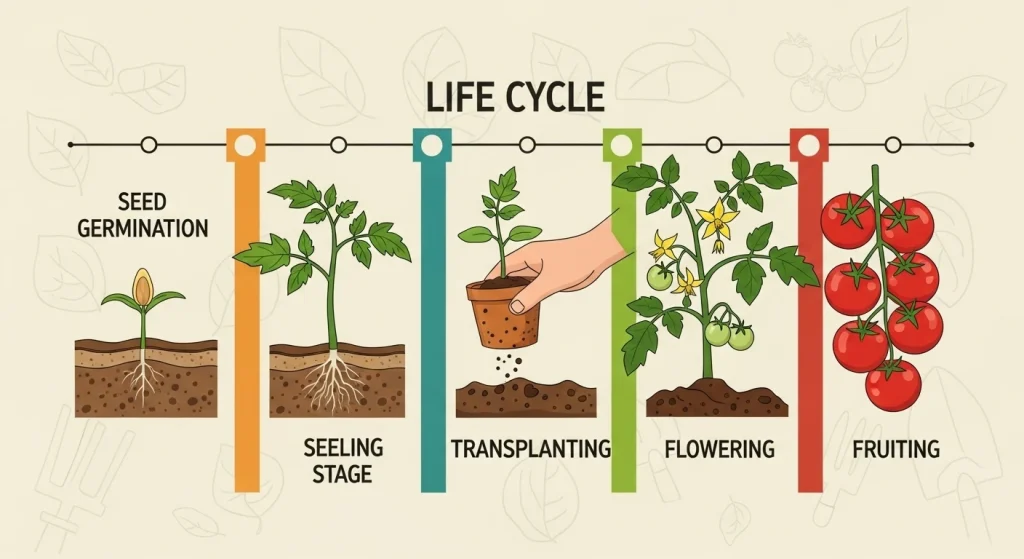
- Days 5–10: Germination under 21–27°C is typical; some batches take a bit longer if cooler.
- First week after sprout: Keep bright light and steady moisture; avoid soggy conditions.
- First true leaves: Thin to the strongest plant per cell/pot and pot up when roots lightly fill cells.
- 3–4 weeks from sprout: Transplant to larger pots if roots need space; keep light close and even.
Want the full growth calendar from nursery to harvest in India? See Tomato Crop Duration in India: Key Growth Stages.
Hardening Off and Transplant
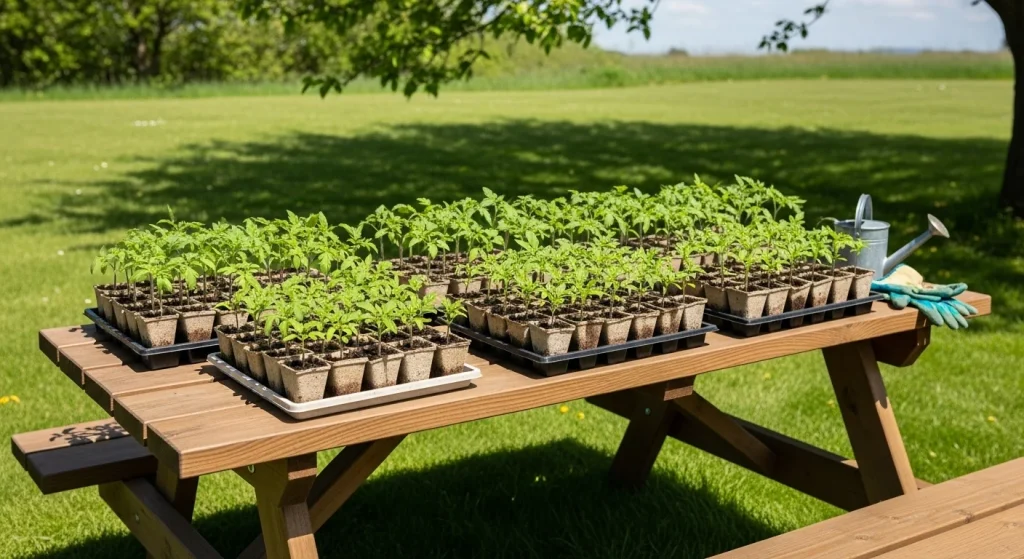
Use a 7-day hardening plan: start with 1–2 hours outdoors in shade and sheltered from wind, then add time and light daily.
Transplant when nights are reliably mild and days are warm; plant deep, burying stems up to the first leaves to promote extra roots, and stake early to prevent root disturbance later.
Common Mistakes and Fixes
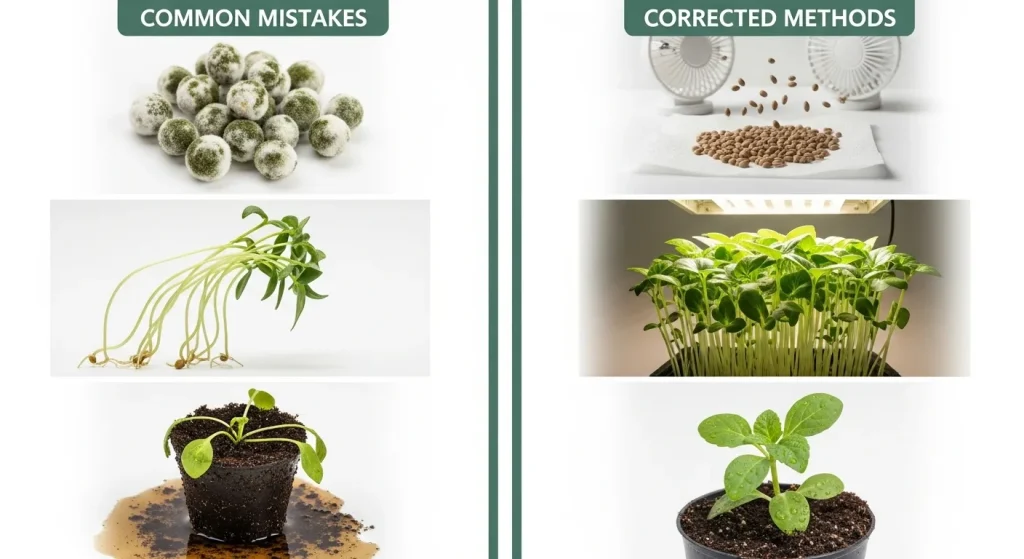
- Overwatering: Leads to damping-off—let the surface dry slightly between gentle waterings; improve airflow.
- Poor light: Causes leggy seedlings—move closer to strong light or add a grow light.
- Using hybrid seeds for saving: Offspring may not match the parent—choose open-pollinated/heirloom fruit for seed saving.
- Skipping fermentation in very humid climates: Raises risk of disease—use a short 48–72 hour ferment to strip the gel and reduce pathogens.
Mini Troubleshooting Box
- Seeds not sprouting: Check temperature—aim for 21–27°C; keep media evenly moist, not wet.
- Damping-off (seedlings collapse at soil line): Improve drainage, reduce watering, increase airflow, and avoid cold, saturated media.
- Leggy seedlings: Increase light intensity or duration; keep lights close (5–10cm) and maintain steady temps.
Extras: Cost-Saving Tip
Make a DIY humidity dome from a clear food container or clamshell to hold moisture during germination; vent daily to prevent excess condensation and disease.
5-Item Checklist
- Ripe, healthy, open-pollinated tomato; extract seeds cleanly.
- Clean via 48–72 hour fermentation (stop when seeds sink) or quick-rinse to sow now.
- Dry seeds 2–3 days in shade if storing; label clearly.
- Sow 0.5cm deep in well-drained mix at pH 6.2–6.8; keep 21–27°C.
- After sprout, give strong light, avoid overwatering, harden off 7 days, transplant deep and stake.
Summary: What to Do Next
Select a fully ripe, healthy, open-pollinated tomato, scoop the seeds, and either ferment 48–72 hours until seeds sink or quick-rinse if sowing immediately; dry 2–3 days if storing, then sow 0.5cm deep in a free-draining seed mix at pH 6.2–6.8, keep evenly moist and warm at 21–27°C for 5–10 days to germinate, provide strong light after emergence, thin and pot up at first true leaves, harden off for 7 days, then transplant deeply and stake early for strong, productive plants.

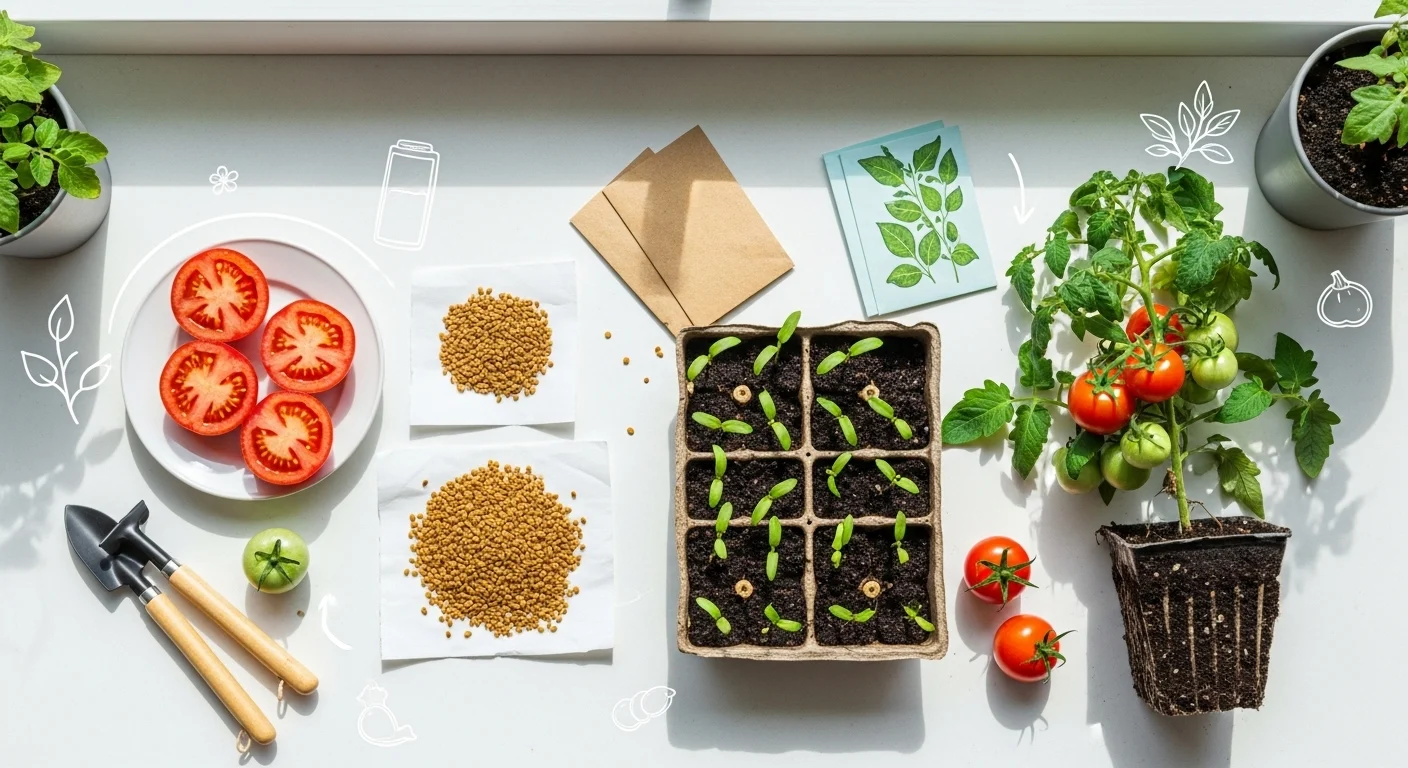

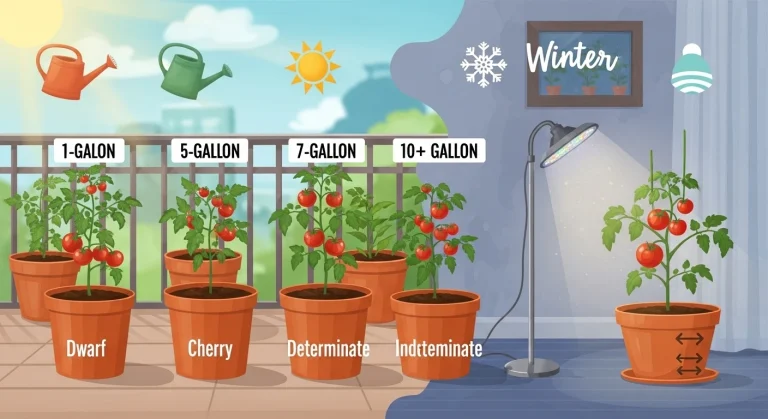
Leave a Comment